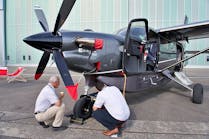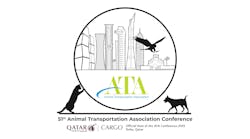Technological innovation continually changes the highly specialized fields in aviation maintenance. What does not and should not change are the fundamentals for an aviation mechanic. Those basics need to be embodied in the A&P written exams that stand between every aviation maintenance student and a Part 65 mechanic’s certificate. The exam may bring nightmares to current maintenance professionals, but most had some idea of what the FAA was going to ask before the test began.
The agency has stopped making the written exam available to the public, whose oversight was essential to ensuring the questions and answers were correct, accurately reflected the Part 147 curricula and were revised when problematic. Since the test bank was removed from the public sphere, the Aviation Technician Education Council (ATEC) has received numerous accounts of vague, inaccurate, or unanswerable questions. The reports indicate that the FAA may not be ensuring the integrity of the A&P exam; but, how can we know?
Other segments of the aviation community had similar problems when their certification exams were removed from public scrutiny. The Airman Testing Standards and Training Aviation Rulemaking Committee (ARC) addressed concerns that the FAA’s testing standards and materials for pilots were falling behind training methods and technology. The committee recommended forming a group of industry professionals to “bolster” the development of the pilot exam. The ARC’s 2012 report concluded that “returning the question bank to the public domain — where it previously resided — is the most effective way by which the aviation industry and FAA can work cooperatively to review, revise, and better focus what knowledge applicants must demonstrate during [the exams].”
The ARC’s conclusions and recommendations demonstrate that the FAA is not in the best position to independently gauge the effectiveness of its exams. Not surprisingly, the agency disagrees. Earlier this year ATEC submitted a Freedom of Information Act request asking the agency to make the A&P test bank available to the public. The FAA summarily concluded that the records are exempt from disclosure and denied the request. ATEC is currently appealing that determination, which will take time.
Cooperation between industry and the agency is essential for preparing the next generation of aviation mechanics and continued air safety. Perhaps it is time for the industry stakeholders to band together to create another rulemaking committee that will evaluate the A&P examination process.
Black boxes provide information to help industry improve. Hiding information in a black box of the agency’s own making only blinds us.
Ryan M. Poteet is an associate of Obadal, Filler, MacLeod and Klein, advising clients in international aviation safety regulation and government affairs. He serves as a regulatory affairs manager for both the Aeronautical Repair Station Association and the Aviation Technician Education Council.


